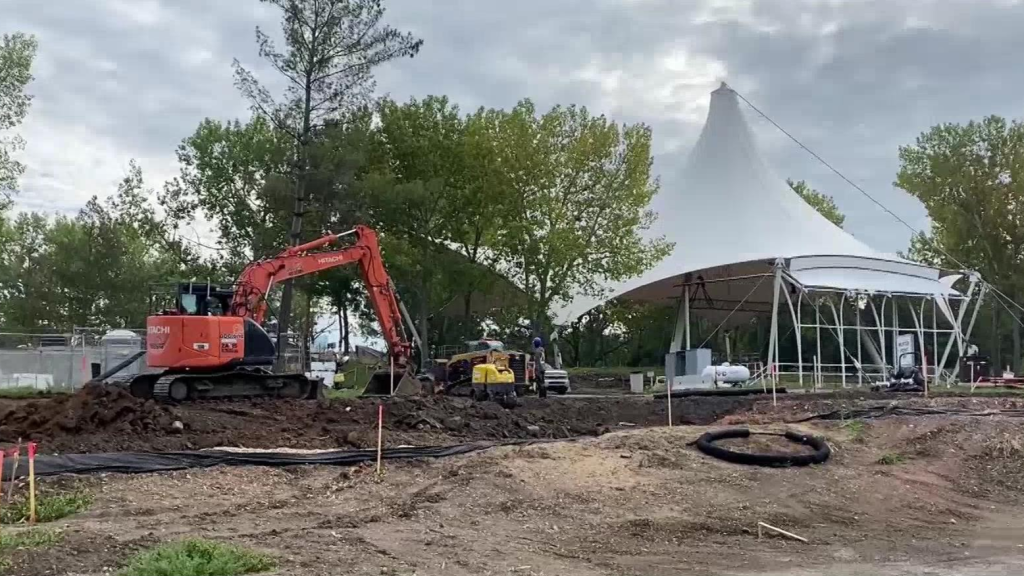Collisions on Anthony Henday could increase with removal of photo radars: Edmonton director of safe mobility

Posted November 25, 2023 1:35 pm.
Last Updated November 25, 2023 1:45 pm.
Removing photo radar from the Anthony Henday could lead to more collisions, according to the City of Edmonton’s director of safe mobility.
Alberta announced it was banning photo radar on Edmonton and Calgary’s ring roads, calling it a “cash cow” that does not improve traffic safety.
But Christie Pelletier tells CityNews a speed violation is recorded on the Henday every seven minutes on average, with excess speed violations – above 130 km/h – happening once every three hours.
The director of safe mobility adds 15 per cent of road fatalities in Edmonton between 2018 and 2022 occurred on Anthony Henday Drive.
“Discontinuing automated enforcement (photo radars) on Anthony Henday Drive will limit the city’s ability to enforce safe speeds on this high-speed road, potentially leading to more collisions,” Pelletier told CityNews in an emailed statement.
“We will actively monitor any impacts that removing the automated enforcement on Anthony Henday Drive will have on achieving Vision Zero.”

Photo radars reduce speed: study
Pelletier says photo radars have been proven to reduce high-speed driving in high-traffic areas.
“Our data shows that Edmontonians’ driving behaviour is changing for the better and that using tickets as a penalty is a strong deterrent to continued speeding.
“Automated enforcement has been shown to significantly reduce speed-related vehicle collisions of all types and severities in Edmonton.”
A 2018 independent review for the province showed photo radar reduced severe collisions by five per cent over 10 years. Edmonton’s director of safe mobility says traffic fatalities in the city dropped by 49 percent between 2010 and 2020.
The number of vehicles receiving multiple tickets per year also decreased steadily between 2019 and 2022, according to Pelletier.
The Alberta government says radar on ring roads was simply about generating traffic fine revenue for the province and municipalities – in a 60/40 split.
WATCH: Province removes photo radar from ring roads

The Coalition for Canadian Police Reform applauded the provincial change, saying laws should never be used for revenue.
“The intent of laws is to prevent people from either involving themselves in a criminal offence or a serious traffic safety offence – not to raise money. As far as I’m concerned, morally it’s wrong,” said Dave Cassels, the group’s president and the former chief of police in Winnipeg.
Redeploying radars to schools, playgrounds
Edmonton and Calgary will have the option to redeploy photo radar units that were previously used on their ring roads to areas that will have an impact on safety: schools, playgrounds and construction zones.
“The city’s automated enforcement program operates under provincial guidelines, which only allow enforcement at pre-approved sites,” Pelletier said. “These sites include speed and crash prone locations and vulnerable areas such as playground zones.
“The city has been enforcing speed limits at these locations and will continue to do so, adding additional enforcement at higher-risk sites to ensure that these assets are used to support safe speeds in other areas of our city.”
It’s not clear yet how the province’s decision to remove photo radar on Anthony Henday Drive will affect the city’s coffers.
“Revenue from automated enforcement is directly reinvested into the city’s safe mobility programs aimed at keeping Edmontonians safer on our streets,” Pelletier said.

‘A welcome change’
Edmonton councillor Tim Cartmell believes the province’s move gives the city more options.
“Right now with the freeze on photo radar, we haven’t been able to put any sort of enforcement on the roads where we’ve had speed and noisy vehicles,” said the Ward pihêsiwin councillor. “So if there’s an ability to transfer some of the Henday spots to spots that are more unsafe, more of a problem, contributing more disorder, then that’s a welcome change.”
CityNews spoke to some Edmontonians who disagreed about how radar is best used.
“It’s more likely on highways,” one person said. “Like families literally die. It’s pretty intense.”
“I do worry about around the school, the cars speeding,” said another. “It would be nice to have some tracking of that.”
“I think photo radar is good, especially in the winter. It prevents accidents,” added a third. “In the neighbourhood, I think there has to be someone pushing for it because you can’t go fast anyway; there’s speed bumps, they’ve narrowed the roads.”








